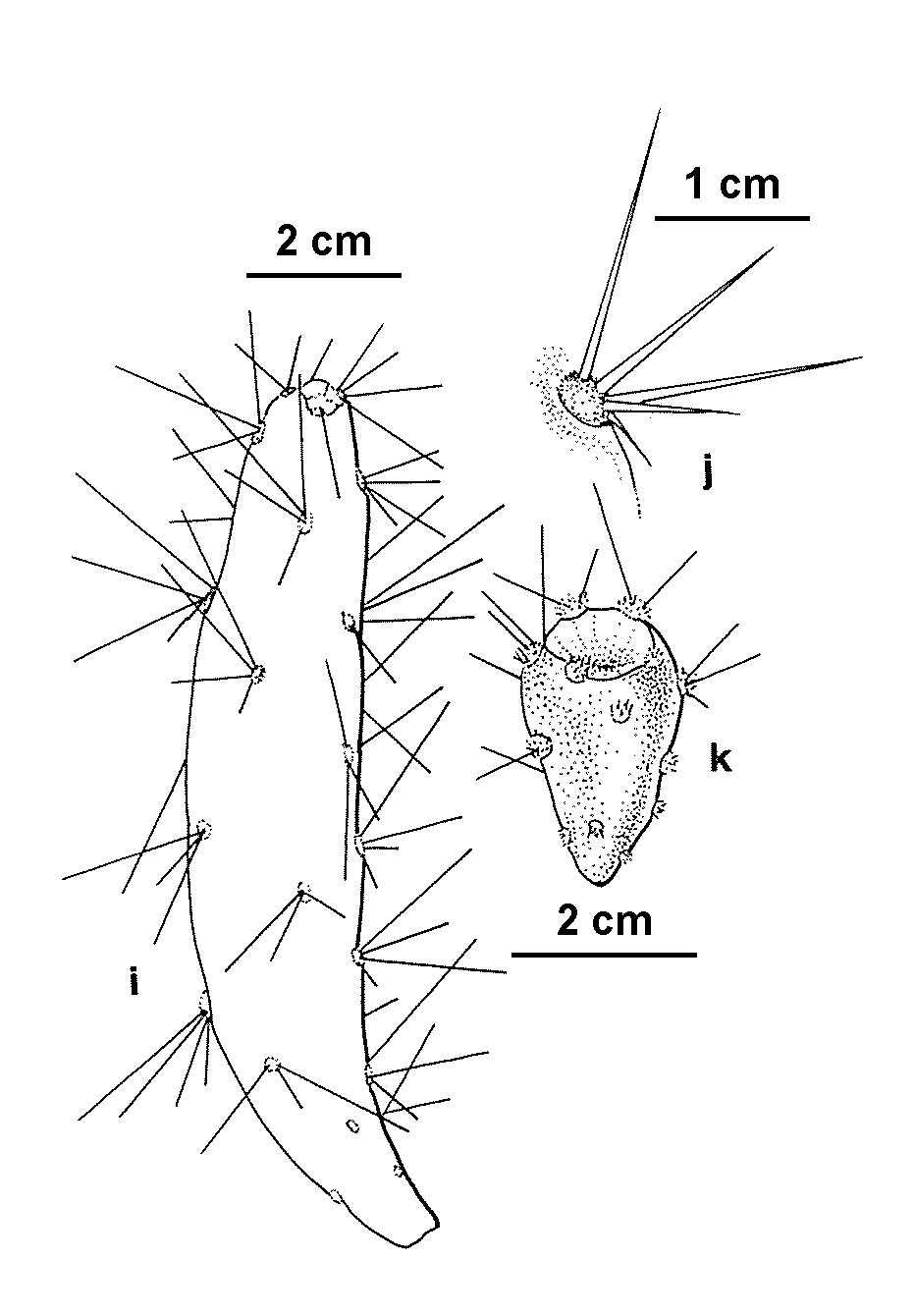Opuntia aurantiaca
Lindl. Tiger PearLow, divaricately branched, spreading to sub-erect shrub to c. 60 cm high. Terminal cladodes readily disarticulating, subcylindric to flattened, narrowly lanceolate, 3.5–30 cm long, 2–4 cm wide, glabrous, green with purplish tinges, glossy; areoles 5–25 mm apart, filled with white to light brown wool and brown glochids; spines spreading, 1–7 per areole on most areoles, 1–4 cm long, 0.6–0.8 mm wide near base, rigid, red to red-brown, ageing white to brownish. Flowers 2.5–5 cm diam.; sepaloids pinkish-red tinged; petaloids spreading, yellow; staminal filaments yellow; style and stigma pale yellow; hypanthium smooth. Fruit obovoid, 2.5–3.5 cm long, 1.5–1.8 cm diam., smooth, with persisting spines, green to reddish-purple, not juicy; not known to produce viable seed. Flowers late spring–summer.
MuM, VVP, VRiv, GipP, OtP, Gold, CVU, NIS, EGL, HSF. Also naturalised SA, Qld, NSW. Probably native to South America, but possibly a hybrid of unknown parentage. Known from Little River (near Geelong) where common on rocky escarpments, and from a localised population at Rushworth.
The fragile cladodes are readily transported on fur and by water.
Stajsic, V.; Carr, G. W. (1996). Cactaceae. In: Walsh, N.G.; Entwisle, T.J., Flora of Victoria Vol. 3, Dicotyledons Winteraceae to Myrtaceae, pp. 119–129. Inkata Press, Melbourne.
 Spinning
Spinning


